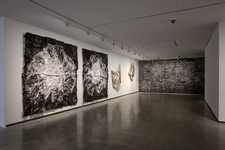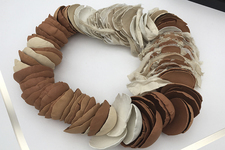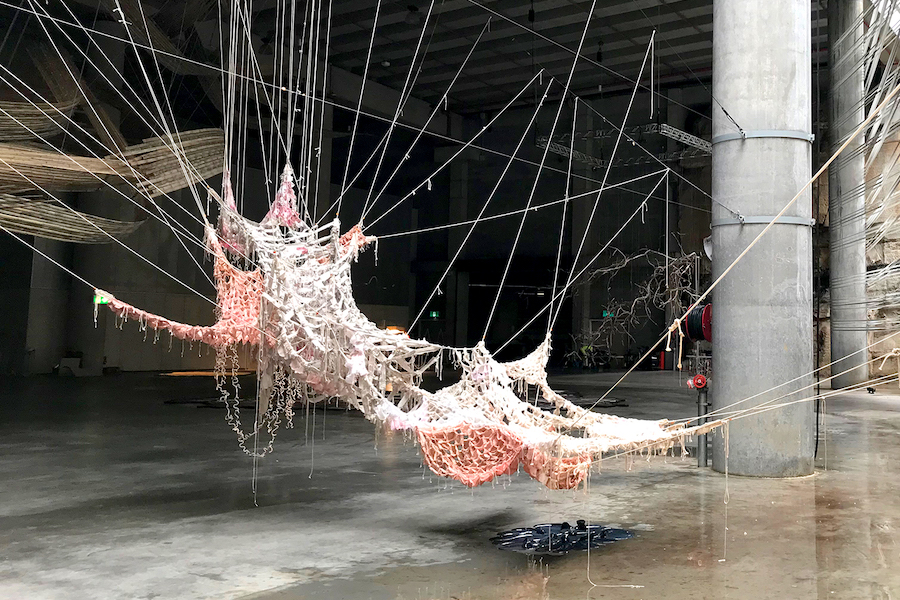
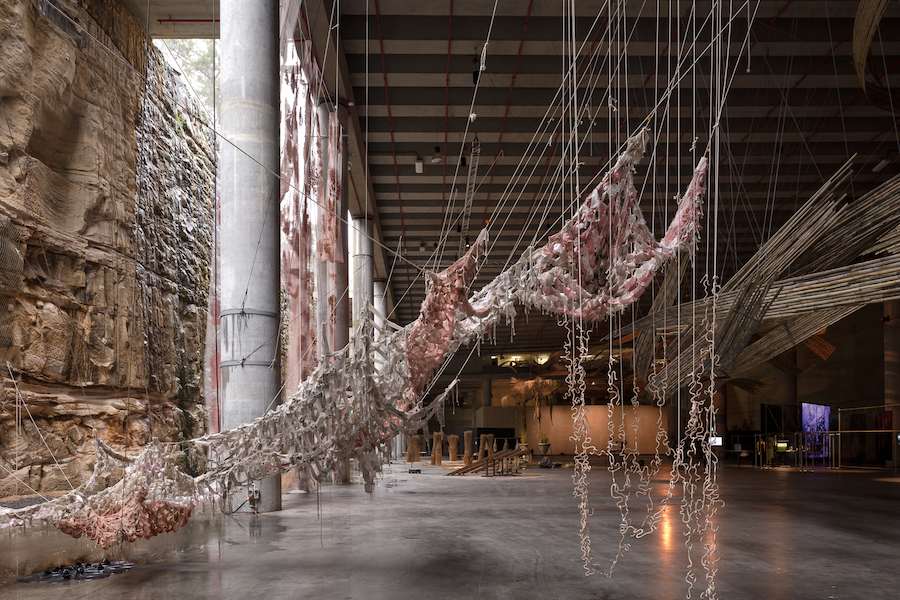
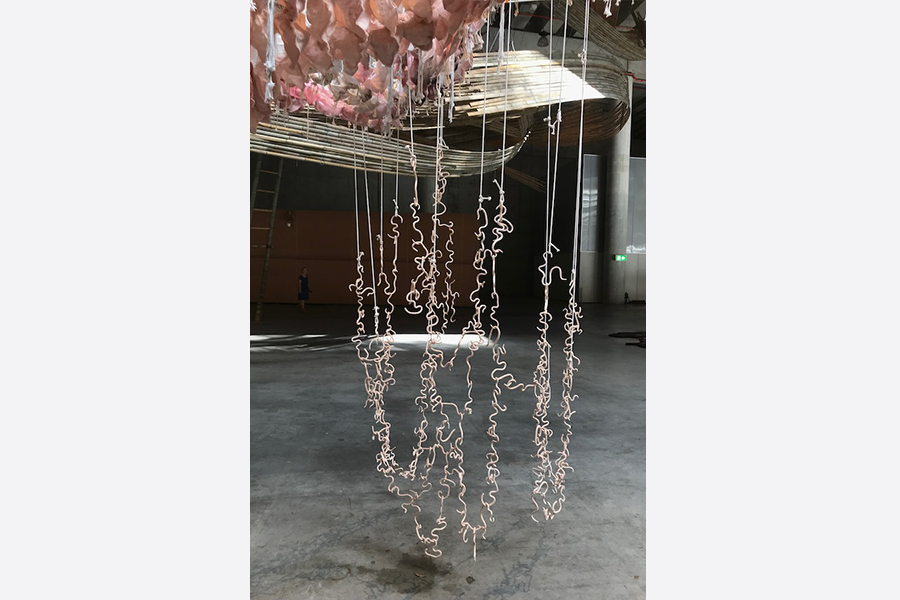
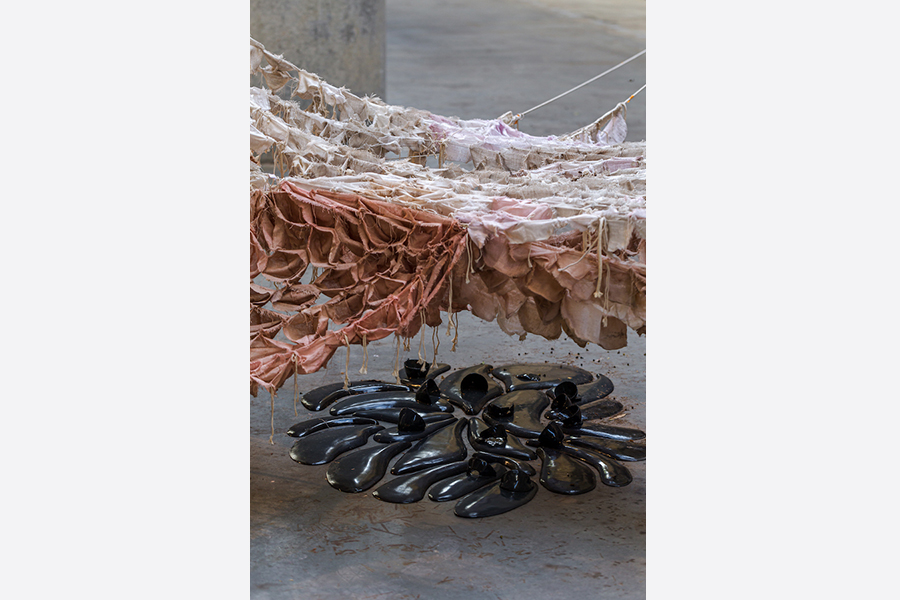
rivus
23º Bienal de Sídney
The Cutaway, Barangaroo, Sídney, Australia.
En este espacio subterráneo abierto al cielo, la artista expone "Kamanchaca" inspirada en las relaciones invisibles y simbióticas entre diferentes formas de existencia.
Marzo – Junio 2022
«Kamanchaca» es una palabra de los pueblos indígenas aymaras de la región de los Andes y el Altiplano. Significa "oscuridad" y describe
una espesa niebla típica del desierto de Atacama que se forma en el océano Pacífico, sube por la cordillera de la costa y se desvanece
al entrar en el valle central. La obra se inspira en la observación de De Solminihac de las relaciones invisibles de simbiosis mutua entre
diferentes formas de existencia. En este atrapanieblas, la artista llama la atención sobre este dispositivo que imita el proceso de
recolección de tallos y hojas, para observar el agua invisible en el aire, un recurso hídrico esencial en el desierto más árido del mundo,
y a la arquitectura invisible del suelo construido por las lombrices. Los caminos que dejan las lombrices con su circulación permiten
la formación de poros de almacenamiento de agua subterránea, un recurso hídrico invisible que constituye la mayor reserva de agua dulce del mundo para el futuro.
[ENG]
23rd Sydney Biennale
The Cutaway, Barangaroo, Sydney, Australia.
In this subway space open to the sky, the artist exhibits “Kamanchaca” inspired by the invisible and symbiotic relationships between different forms of existence.
March - June 2022
"Kamanchaca" is a word of the indigenous Aymara people of the Andes and the Altiplano. It means "darkness" and describes a thick fog typical of the Atacama Desert which is formed in the Pacific Ocean, rises along the coastal mountain range, and disappears as it enters the central valley. The work is inspired by De Solminihac's observation of the invisible relationships of mutual symbiosis between different forms of existence. In this fog catcher, the artist draws attention to this device, which mimics the process of collecting stems and leaves, to observe the invisible water in the air, an essential water resource in the driest desert in the world, and to the invisible architecture of the soil built by earthworms. The tracks left by the earthworms as they circulate allow the formation of underground water storage pores, an invisible water resource that constitutes the world's largest freshwater reserve for the future.
Obras relacionadas:
Columna Lombriz
